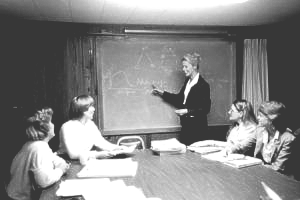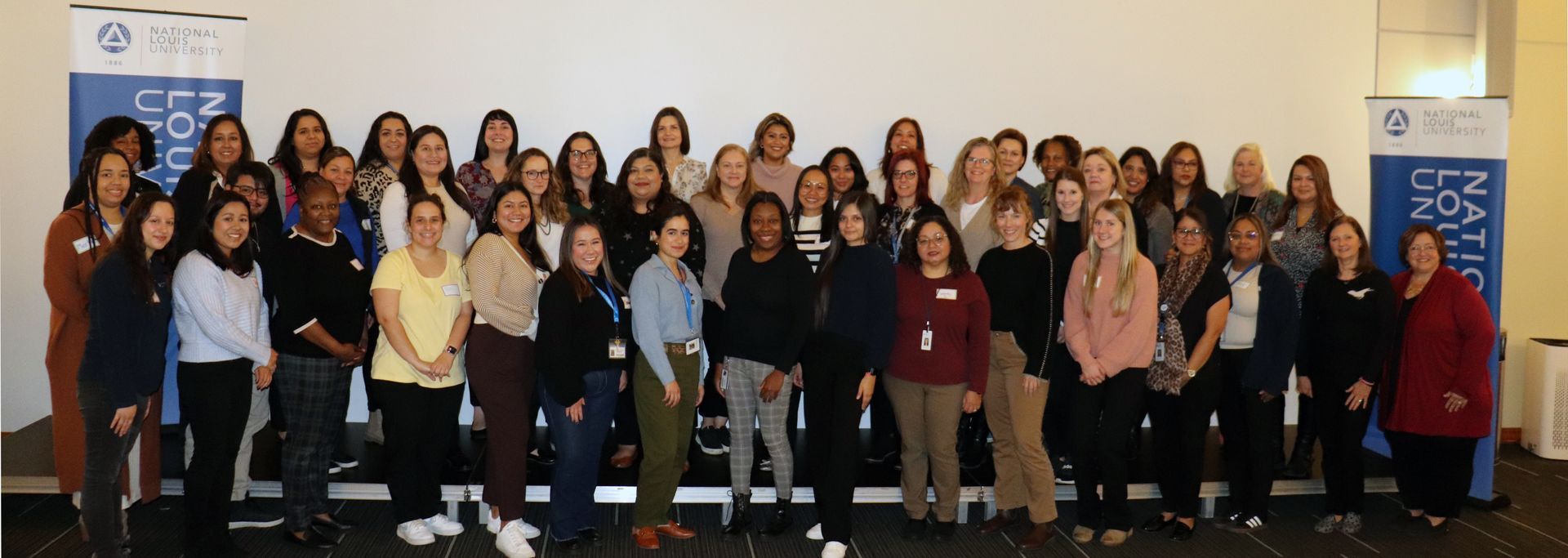BY McCormick Center | December 6, 2023
Learning a new language and adapting to mainstream customs can be intimidating. Culture shock is a real and powerful experience affecting one’s mental health and overall well-being in ways that are often overlooked. Low-income Latino families often experience greater challenges in engaging with their child’s learning and development compared to other ethnicities due to “educational, cultural, and linguistic barriers” (Miller & Greenfader, 2021, p.1). Many individuals come to the U.S. in pursuit of the American Dream—a goal that requires hard work, sacrifice, and overcoming these educational, cultural, and linguistic barriers.
In homes and center-based programs, early childhood administrators establish protocols and set the tone for welcoming children and families into their programs. Administrators are also responsible for supporting classroom staff who deal with the behaviors sometimes seen when children and families enter new settings. The story below offers some lessons learned and some things to think about as administrators make intentional plans to welcome families, especially those who may also be new to the country, into programs.
Building Trust Through Shared Experience
Imagine being a five-year-old preschooler, crying every morning at drop-off and clinging to your mother as if it were the last time you would see one another. This was the situation I encountered as a preschool assistant teacher, struggling to understand why a child had such a difficult transition every day during arrival. The child’s distress was a mystery until one day, during a parent-teacher conference, the child’s mother finally shared their story, revealing the deep trauma they both had faced.
As a first-generation Mexican-American, I could relate to the challenges of adapting to a new language and culture. I shared my experience as a bilingual student during a parent-teacher conference. This personal connection fostered a breakthrough, helping the mother and I form a trusting relationship. After that, the mother shared some of the trauma her family had experienced when immigrating to America. Circumstances in their country of origin forced her to send her child to America ahead of her to live with relatives who were strangers for a few weeks. This left both the mother and the child with deep trauma and anxiety around separation. Additionally, the mother shared that she feared that her child’s behavior would be misconstrued by school authorities and worried about being seen as a bad mother. This likely added to both her and her child’s stress and anxiety during drop-off.
Supporting the Child’s Needs in the Classroom
Armed with this new information, the teaching team tailored our approach to meet the child’s emotional needs. We comforted the child if they cried, explained that mom would always return, and provided a calming item and a family photo for comfort. We also created an individualized visual schedule, pairing it with the classroom schedule to reduce anxiety. After some time, the child stopped crying routinely, and the mother expressed her deep gratitude for our support. Reflecting on the experience, I remember the helplessness I initially felt when the child cried every morning. Now, I deeply appreciate the opportunity to build authentic, trusting relationships with families, children, and educators.
REFLECTING ON BEST PRACTICES
The mother’s willingness to share her story and partner with me to better support her child was transformative. It marked the beginning of the development of an effective transition plan for her child and the development of strong communication between the mother and teaching staff. I listened actively, ensuring she felt safe and comfortable, and then shared my own experience. Speaking the same primary language didn’t give me an automatic advantage; trust had to be earned, and it was through consistent actions that we demonstrated care and support for the child. Trust and respect were the keys to success.
Looking back, expanding the enrollment form to inquire more about the child’s family and community would have been beneficial. During enrollment, many early childhood programs focus on learning basic child-related information like medical information, food preferences, and/or individuals authorized to pick up the child. However, capitalizing on the enrollment period as an opportunity to learn more about the child and family allows us to better meet their needs.
The Business Administration Scale for Family Child Care (BAS-2) and the Program Administration Scale (PAS-3) both highlight the importance of soliciting information about each child’s developmental history, families’ beliefs, culture, and childrearing practices during the intake process (Talan & Bloom, 2018; Talan et al., 2022). If I had understood this particular family’s previous experiences right from the start, it could have eased the child’s transition. We could have provided better support for the child. Even if the mother only disclosed a small amount of information at enrollment, it would have helped jumpstart our trust and partnership.
Reflective Questions
Below are some topics and questions you may want to consider adding to your enrollment and intake processes and procedures. Add questions that make the most sense in your setting.
- What would be helpful to know about a new child’s developmental history?
- Questions asking when the child met certain development milestones (crawl, walk, etc.)
- Questions about the child’s preferred interests when playing (puzzles, books, paint, etc.)
- Others:
- What would be helpful to know about a new family’s beliefs and culture?
- Questions asking about days or celebrations that are important to the family
- Questions asking about the family’s hopes and dreams for their child
- Names for important items or people (e.g., what does your child call their favorite toy or stuffed animal, relatives, etc.)
- What would be helpful to know about a new family’s childrearing practices?
- Schedule times for napping, eating, enrichment activities, etc.
- Potty training preferences, meal practices, limited screen time, etc.
- Others:
Want to learn more about the PAS, BAS, or any of our family engagement professional development opportunities? Contact us at pas.bas@nl.edu
REFERENCES
Miller, E., Greenfader, C. (2021, September 27). Latino family engagement in Head Start and elementary school: Associations with outcomes in two datasets. Society for Research on Educational Effectiveness (SREE). https://eric.ed.gov/?q=Social+AND+behaviors+AND+parents&ff1=lawHead+Start&id=ED656947
Talan, T., Bella, J. M., Bloom, P. J. (2022). Program administration scale: Measuring whole leadership in early childhood centers, third edition. Teachers College Press.
Talan, T., Bloom, P. J. (2018).
Business administration scale for family child care, second edition. Teachers College Press.





